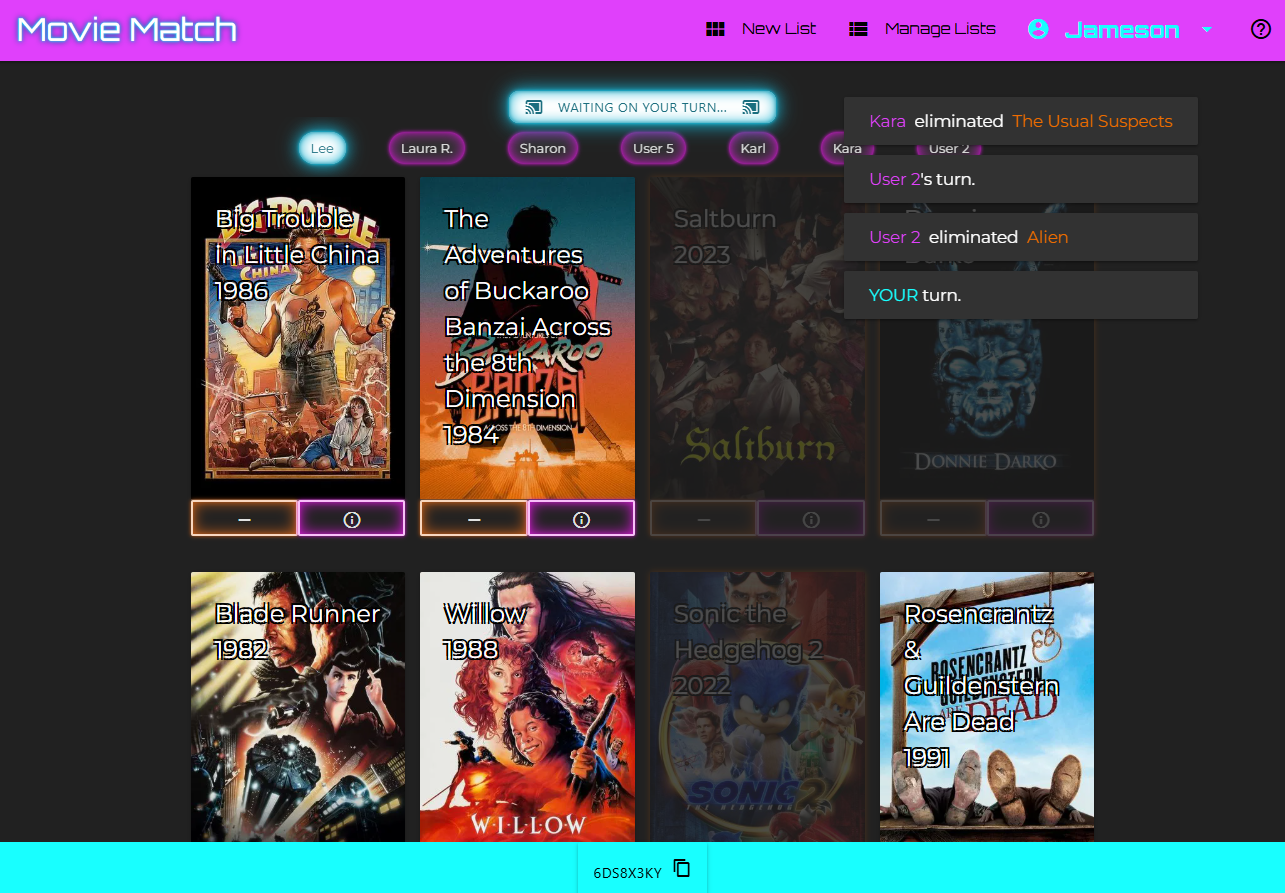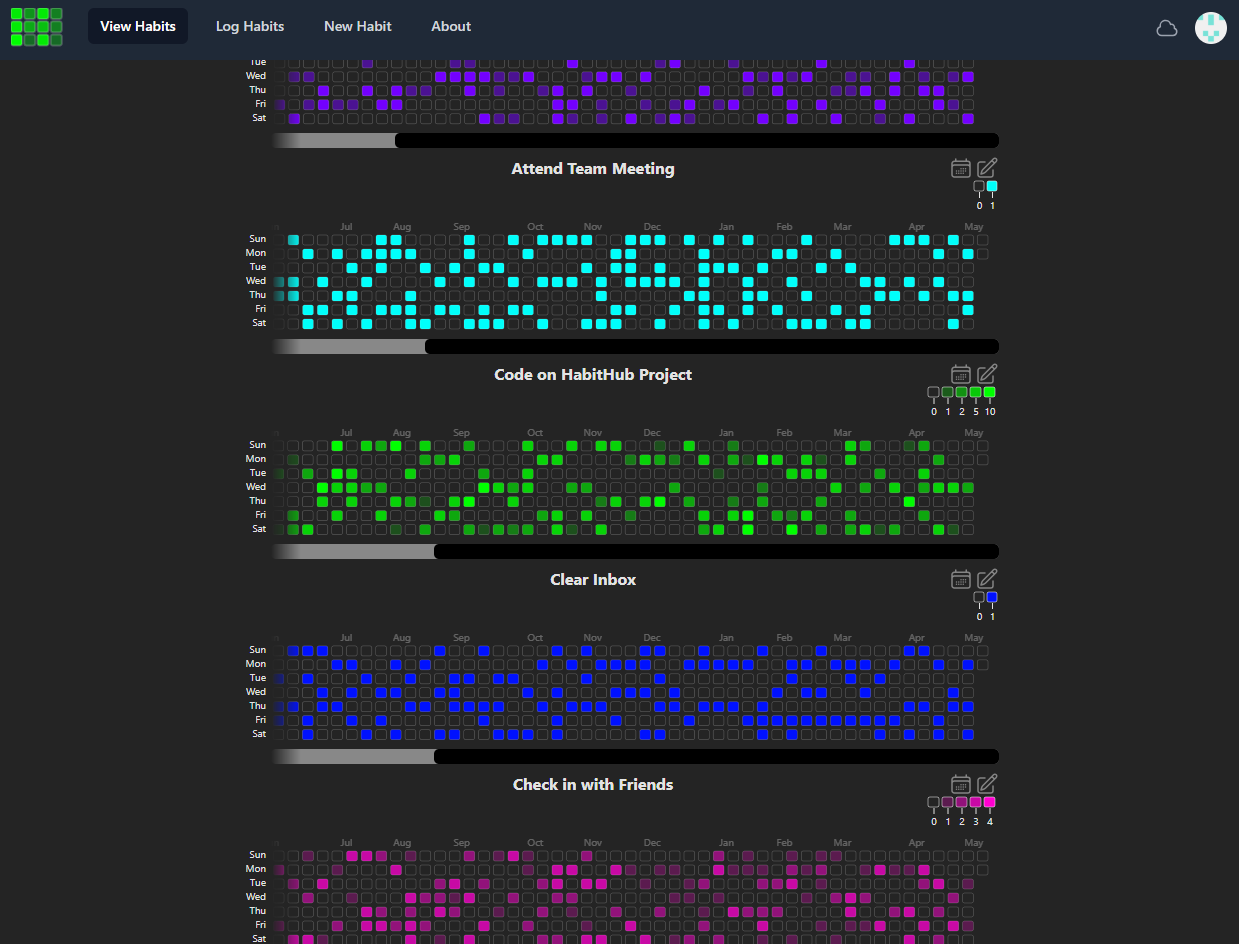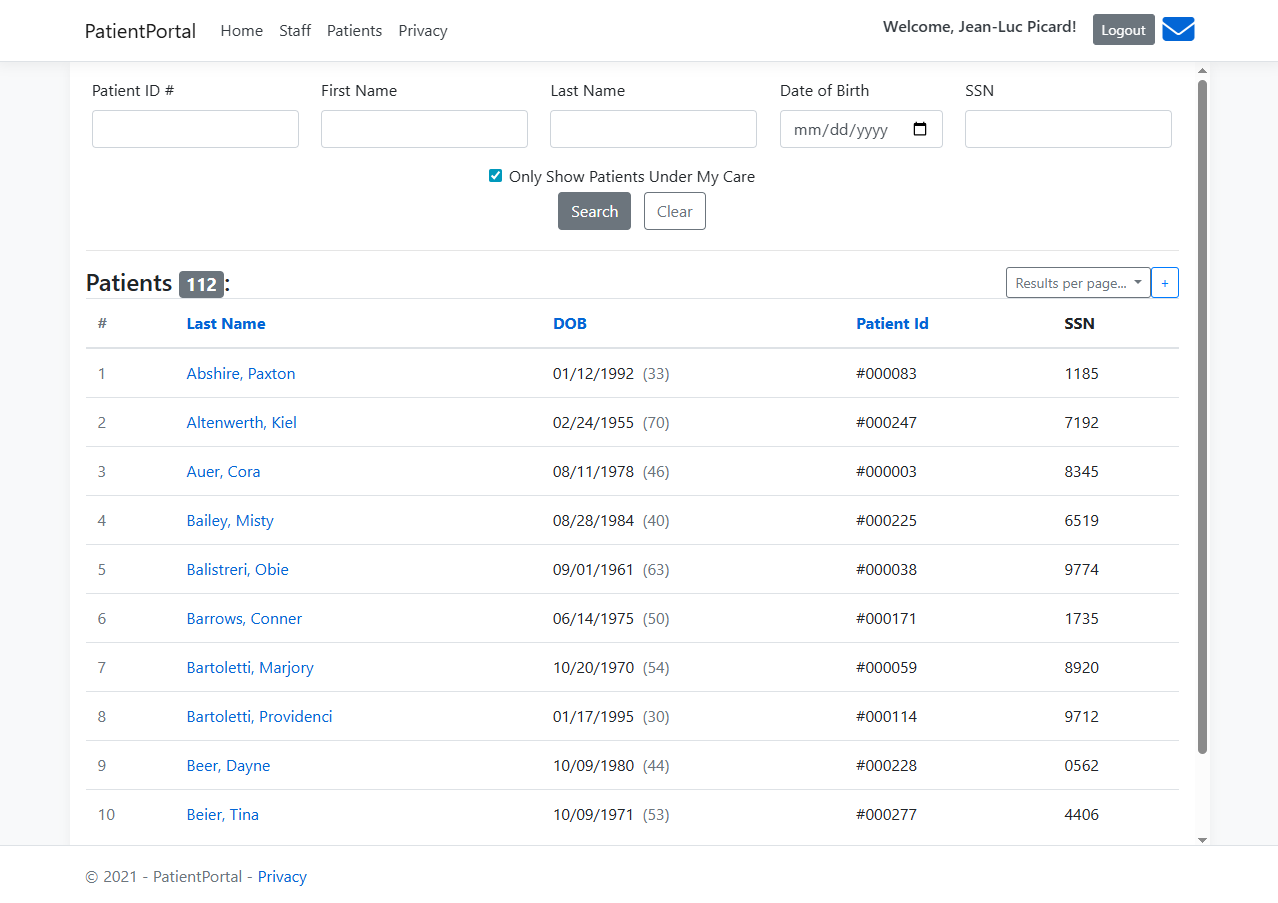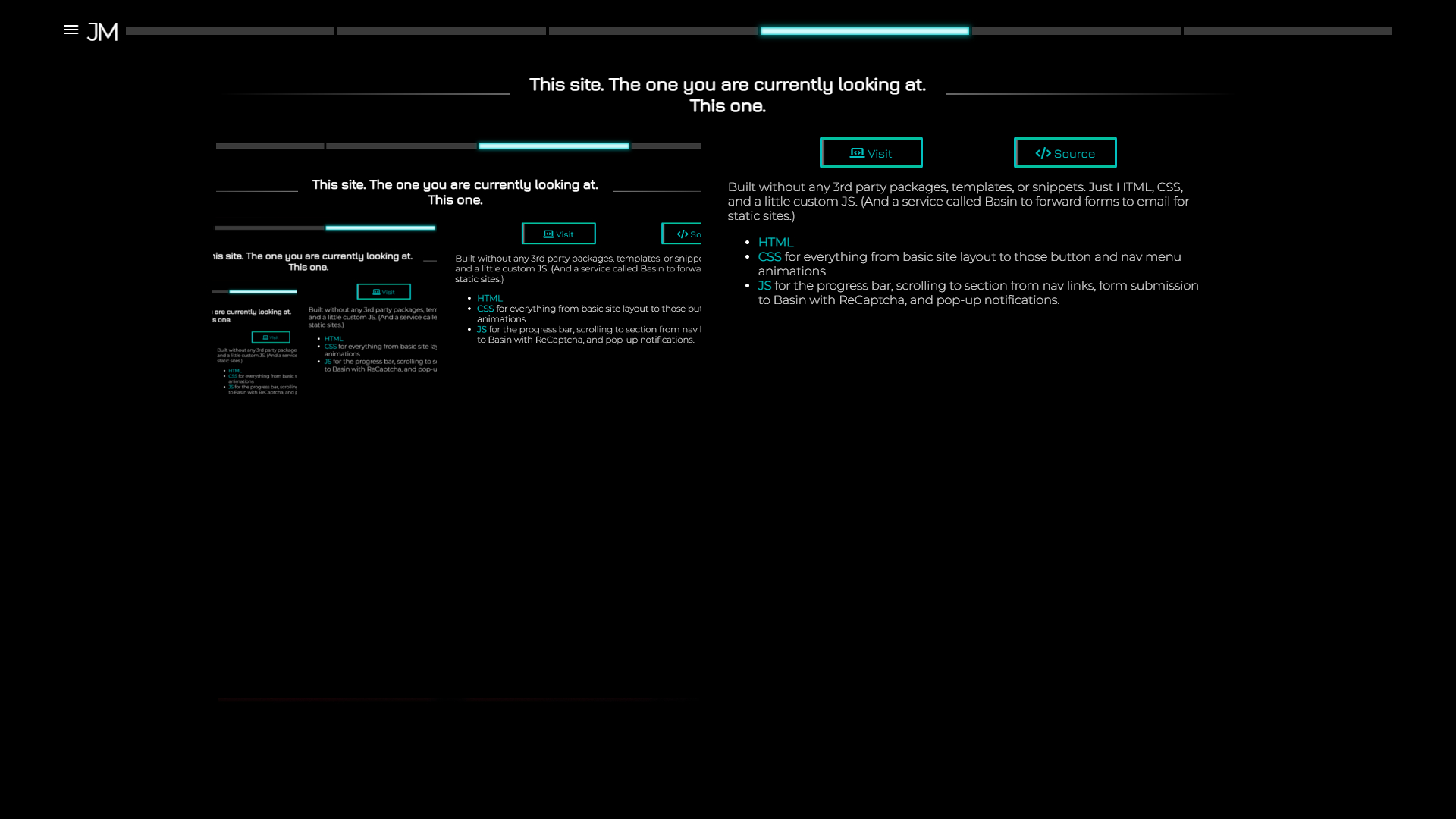MovieMatch is for anyone who spends almost as much time deciding on a movie with friends as they do actually watching one. Build, save, and share tailored lists. Pool your choices with friends, and then take turns eliminating one you don't want to watch until only one remains.
- Django backend written in Python for robust, scalable server-side logic and user management
- Channels for running websockets allowing real time interaction with multiple users
- Gunicorn for scalable WSGI application serving, and Daphne for handling ASGI requests
- PostgreSQL for reliable relational data storage of user and movie info
- Redis for in-memory backing store for websocket connections and ephemeral data
- Vanilla JavaScript, HTML, and CSS for a fast, responsive frontend experience
- Webpack for ES6 module bundling and optimized asset delivery
- BCrypt for secure password hashing
- TheMovieDB API to source and search movies




